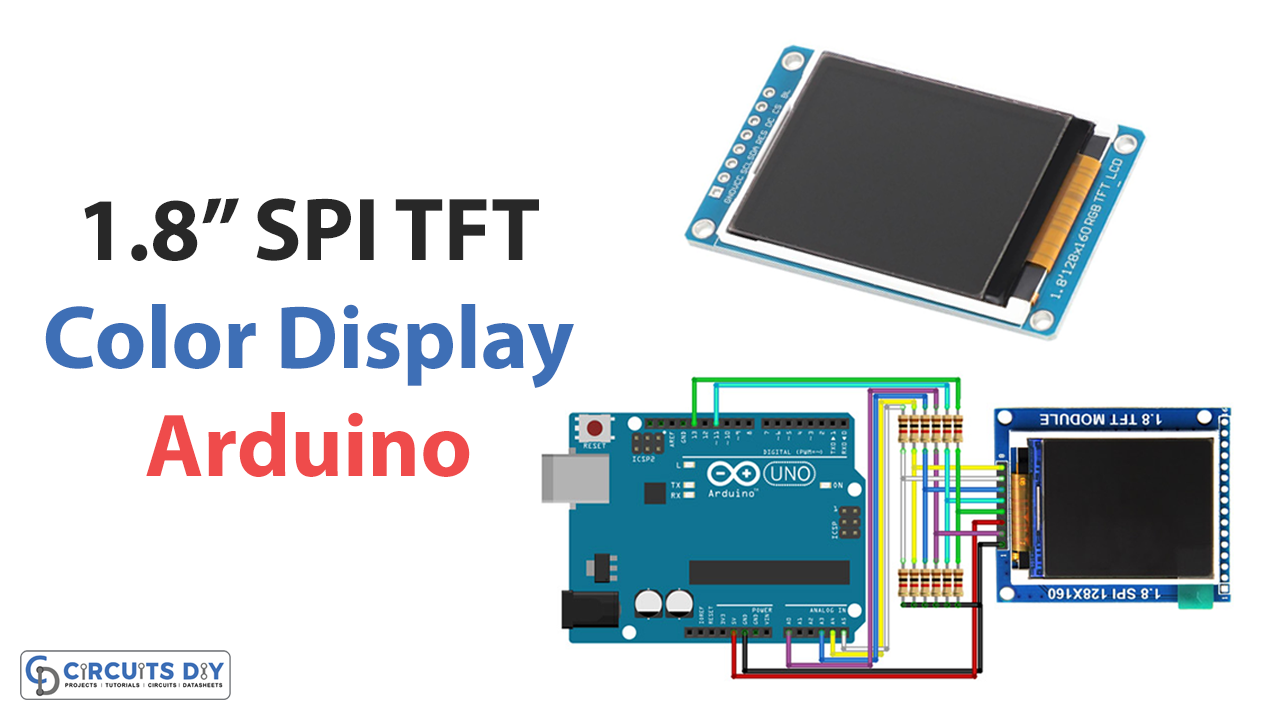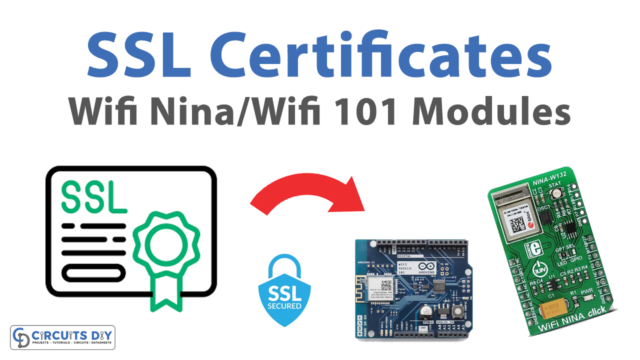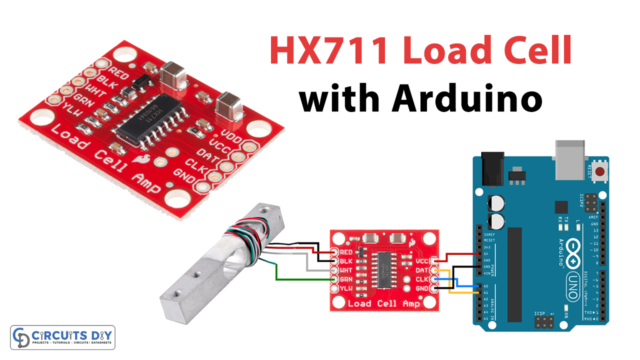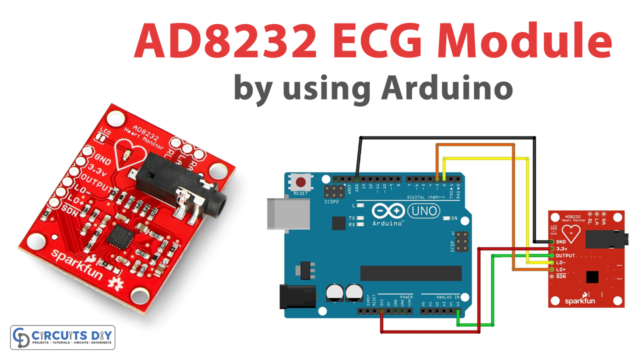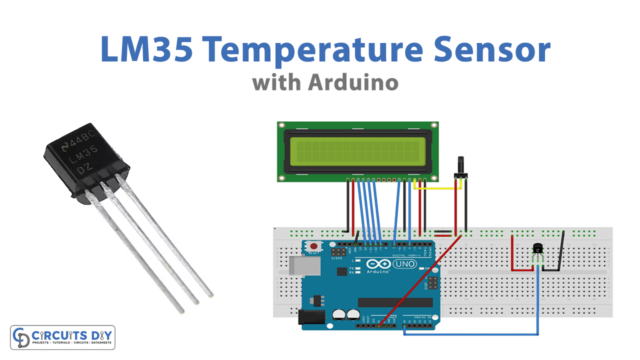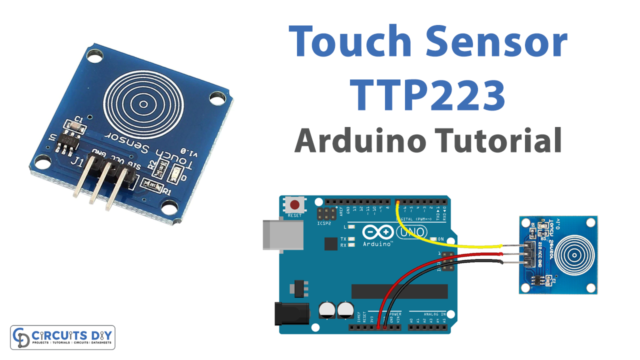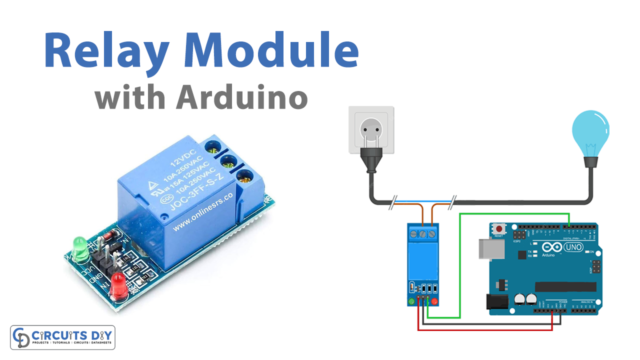Introduction
This tutorial introduces a powerful and versatile display module – the 1.8 Inch SPI TFT Color Display. This small yet mighty module packs a punch with its ability to display vibrant colors and high-resolution images. It is perfect for creating dynamic user interfaces and opens up many possibilities for different projects.
With the ease of interfacing it with an Arduino microcontroller, the possibilities are endless. This article will guide you through setting up this display module and how to harness its full potential. So, if you’re ready to take your projects to the next level, read on!
What is Color Display Module?
A color display module refers to a display monitor that is able to show a wide range of colors. They are wonderful for enhancing the user interface of any product by adding a fascinating element to it. They may be found in more advanced forms of mobile phones, tablets, computers, and digital picture frames.

Hardware Components
You will require the following hardware for Interfacing 1.8 Inch SPI TFT Color Display Module with Arduino.
| S.no | Component | Value | Qty |
|---|---|---|---|
| 1. | Arduino UNO | – | 1 |
| 2. | ST7735R SPI TFT Display | 1.8 inch | 1 |
| 3. | Resistor | 1KΩ | 14 |
| 4. | Breadboard | – | 1 |
| 5. | Jumper Wires | – | 1 |
1.8 Inch Display Module with Arduino
Now to interface the color display module with Arduino, you need to follow the given steps:
Schematic
Make connections according to the circuit diagram given below.
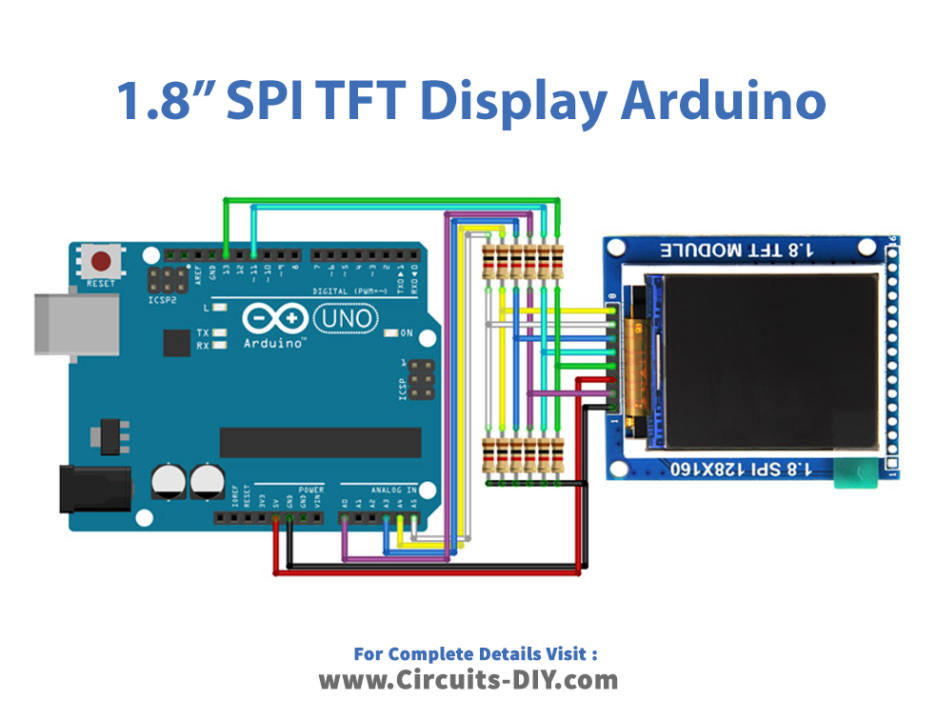
Installing Arduino IDE
First, you need to install Arduino IDE Software from its official website Arduino. Here is a simple step-by-step guide on “How to install Arduino IDE“.
Installing Libraries
Before you start uploading a code, download and unzip the following libraries at /Progam Files(x86)/Arduino/Libraries (default), in order to use the sensor with the Arduino board. Here is a simple step-by-step guide on “How to Add Libraries in Arduino IDE“.
Code
Now copy the following code and upload it to Arduino IDE Software.
// IMPORTANT: LCDWIKI_SPI LIBRARY MUST BE SPECIFICALLY
// CONFIGURED FOR EITHER THE TFT SHIELD OR THE BREAKOUT BOARD.
//This program is a demo of how to use most of the functions
of the library with a supported display module.
//when using the BREAKOUT BOARD only and using these hardware spi lines to the LCD,
The SDA pin and SCK pin are defined by the system and can't be modified.
If you don't need to control the LED pin, you can set it to 3.3V and set the pin definition to -1.
//other pins can be defined by youself,for example
//pin usage as follow:
// CS D/C RST DIN CLK BL VCC GND
//Arduino Mega2560 A5 A3 A4 51 52 A0 5V GND
//Arduino Uno A5 A3 A4 11 13 A0 5V GND
Remember to set the pins to suit your display module!
/********************************************************************************
* @attention
*
* THE PRESENT FIRMWARE WHICH IS FOR GUIDANCE ONLY AIMS AT PROVIDING CUSTOMERS
* WITH CODING INFORMATION REGARDING THEIR PRODUCTS IN ORDER FOR THEM TO SAVE
* TIME. AS A RESULT, QD electronic SHALL NOT BE HELD LIABLE FOR ANY
* DIRECT, INDIRECT OR CONSEQUENTIAL DAMAGES WITH RESPECT TO ANY CLAIMS ARISING
* FROM THE CONTENT OF SUCH FIRMWARE AND/OR THE USE MADE BY CUSTOMERS OF THE
* CODING INFORMATION CONTAINED HEREIN IN CONNECTION WITH THEIR PRODUCTS.
**********************************************************************************/
#include <LCDWIKI_GUI.h> //Core graphics library
#include <LCDWIKI_SPI.h> //Hardware-specific library
//paramters define
#define MODEL ST7735S
#define CS A5
#define CD A3
#define RST A4
#define LED//A0 // if you don't need to control the LED pin,you should set it to -1 and set it to 3.3V
//the definiens of hardware spi mode as follow:
//if the IC model is known or the modules is unreadable,you can use this constructed function
LCDWIKI_SPI my_lcd(MODEL,CS,CD,RST,LED); //model,cs,dc,reset,led
unsigned long show_text(void)
{
unsigned long time_start = micros();
my_lcd.Set_Draw_color(32, 0,255);
my_lcd.Fill_Rectangle(0, 0, my_lcd.Get_Display_Width()-1, 10);
my_lcd.Set_Text_colour(0, 255, 0);
my_lcd.Set_Text_Size(1);
my_lcd.Set_Text_Mode(1);
my_lcd.Print_String("* Color TFT Display *", CENTER, 2);
my_lcd.Set_Draw_color(128, 128, 128);
my_lcd.Fill_Rectangle(0, my_lcd. my_lcd. Get_Display_Height()-1-10, my_lcd. my_lcd. Get_Display_Width()-1, my_lcd. my_lcd. Get_Display_Height()-1);
my_lcd.Set_Text_colour(255, 255, 255);
my_lcd.Set_Text_Size(1);
my_lcd.Set_Text_Mode(1);
my_lcd.Print_String("<www.lcdwiki.com>", CENTER, my_lcd.Get_Display_Height()-9);
my_lcd.Set_Draw_color(255,255,0);
my_lcd.Draw_Rectangle (0, 11), my_lcd. Get_Display_Width()-1, my_lcd. my_lcd. Get_Display_Height()-1-11);
return micros() - time_start;
}
unsigned long show_triangle_function(void)
{
uint16_t i;
unsigned long time_start = micros();
my_lcd.Set_Draw_color(0, 0, 255);
my_lcd.Draw_Fast_VLine(my_lcd.Get_Display_Width()/2-1, 12, my_lcd.Get_Display_Height()- 24);
my_lcd.Draw_Fast_HLine(1, my_lcd. my_lcd. Get_Display_Height()/2-1, my_lcd.Get_Display_Width()-2);
for(i = 1;i <= (my_lcd.Get_Display_Height()- 32)/2/10;i++)
{
my_lcd.Draw_Fast_HLine(my_lcd.Get_Display_Width()/2-1-2, my_lcd.Get_Display_Height()/2-1-i*10, 5);
my_lcd.Draw_Fast_HLine(my_lcd.Get_Display_Width()/2-1-2, my_lcd.Get_Display_Height()/2-1+i*10, 5);
}
for(i = 1;i <= (my_lcd.Get_Display_Width()-2)/2/10;i++)
{
my_lcd.Draw_Fast_VLine(my_lcd.Get_Display_Width()/2-1-i*10, my_lcd.Get_Display_Height()/2-1-2, 5);
my_lcd.Draw_Fast_VLine(my_lcd.Get_Display_Width()/2-1+i*10, my_lcd.Get_Display_Height()/2-1-2, 5);
}
my_lcd.Set_Text_colour(0, 255, 255);
my_lcd.Set_Text_Back_colour(0,0,0);
my_lcd.Set_Text_Size(1);
my_lcd.Set_Text_Mode(0);
my_lcd.Print_String("sin",5,17);
my_lcd.Set_Draw_color(0, 255, 255);
for (i=1; i<my_lcd.Get_Display_Width()-2; i++)
{
my_lcd.Draw_Pixel(i,my_lcd.Get_Display_Height()/2-1+(sin(((i*2.27)*3.14)/180)*40));
}
my_lcd.Set_Text_colour(0, 255, 0);
my_lcd.Set_Text_Back_colour(0,0,0);
my_lcd.Set_Text_Size(1);
my_lcd.Set_Text_Mode(0);
my_lcd.Print_String("cos",5,25);
my_lcd.Set_Draw_color(0, 255, 0);
for (i=1; i<my_lcd.Get_Display_Width()-2; i++)
{
my_lcd.Draw_Pixel(i,my_lcd.Get_Display_Height()/2-1+(cos(((i*2.27)*3.14)/180)*40));
}
my_lcd.Set_Text_colour(255, 255, 0);
my_lcd.Set_Text_Back_colour(0,0,0);
my_lcd.Set_Text_Size(1);
my_lcd.Set_Text_Mode(0);
my_lcd.Print_String("tan",5,33);
my_lcd.Set_Draw_color(255, 255, 0);
for (i=1; i<my_lcd.Get_Display_Width()-2; i++)
{
my_lcd.Draw_Pixel(i,my_lcd.Get_Display_Height()/2-1+(tan(((i*2.27)*3.14)/180)*2));
}
my_lcd.Set_Text_colour(255, 0, 0);
my_lcd.Set_Text_Back_colour(0,0,0);
my_lcd.Set_Text_Size(1);
my_lcd.Set_Text_Mode(0);
my_lcd.Print_String("cot",5,41);
my_lcd.Set_Draw_color(255, 0, 0);
for (i=1; i<my_lcd.Get_Display_Width()-2; i++)
{
my_lcd.Draw_Pixel(i,my_lcd.Get_Display_Height()/2-1+1/(tan(((i*2.27)*3.14)/180)*0.5));
}
return micros()-time_start;
}
unsigned long show_sinewave(void)
{
uint16_t buf[my_lcd.Get_Display_Width()-2],x = 1,i,y;
unsigned long time_start = micros();
int16_t t = 20, b = 40;
float k = 2.5;
my_lcd.Set_Draw_color(0, 0, 255);
my_lcd.Draw_Fast_VLine(my_lcd.Get_Display_Width()/2-1, 12, my_lcd.Get_Display_Height()- 24);
my_lcd.Draw_Fast_HLine(1, my_lcd. my_lcd. Get_Display_Height()/2-1, my_lcd.Get_Display_Width()-2);
for (i=1; i<((my_lcd.Get_Display_Width()-2)*t); i++)
{
x++;
if (x==my_lcd.Get_Display_Width()-1)
{
x=1;
}
if (i>my_lcd.Get_Display_Width()-1)
{
if ((x==my_lcd.Get_Display_Width()/2-1)||(buf[x-1]==my_lcd.Get_Display_Height()/2-1))
{
my_lcd.Set_Draw_color(0, 0, 255);
}
else
{
my_lcd.Set_Draw_color(0, 0, 0);
}
my_lcd.Draw_Pixel(x,buf[x-1]);
}
my_lcd.Set_Draw_color(255, 64, 255);
y=my_lcd.Get_Display_Height()/2-1+(sin(((i*k)*3.14)/180)*(b-(i/100)));
my_lcd.Draw_Pixel(x,y);
buf[x-1]=y;
}
return micros()- time_start;
}
unsigned long show_fill_rectangle(void)
{
uint16_t i;
unsigned long time_start = micros();
uint16_t side_len = (my_lcd.Get_Display_Height()-40)/5;
uint16_t x_spec = (my_lcd.Get_Display_Width()-5*side_len)/2;
uint16_t y_spec = (my_lcd.Get_Display_Height()-5*side_len)/2;
for(i = 0;i<5;i++)
{
switch (i)
{
case 0:
my_lcd.Set_Draw_color(255,0,255);
break;
case 1:
my_lcd.Set_Draw_color(255,0,0);
break;
case 2:
my_lcd.Set_Draw_color(0,255,0);
break;
case 3:
my_lcd.Set_Draw_color(0,0,255);
break;
case 4:
my_lcd.Set_Draw_color(255,255,0);
break;
default:
break;
}
my_lcd.Fill_Rectangle(x_spec+i*side_len-1, y_spec+i*side_len-1, x_spec+(i+1)*side_len-1, y_spec+(i+1)*side_len-1);
my_lcd.Fill_Rectangle(x_spec+i*side_len-1, y_spec+(5-i)*side_len-1, x_spec+(i+1)*side_len-1, y_spec+(4-i)*side_len-1);
}
return micros()- time_start;
}
unsigned long show_fill_round_rectangle(void)
{
uint16_t i;
unsigned long time_start = micros();
uint16_t side_len = (my_lcd.Get_Display_Height()-40)/5;
uint16_t x_spec = (my_lcd.Get_Display_Width()-5*side_len)/2;
uint16_t y_spec = (my_lcd.Get_Display_Height()-5*side_len)/2;
for(i = 0;i<5;i++)
{
switch (i)
{
case 0:
my_lcd.Set_Draw_color(255,0,255);
break;
case 1:
my_lcd.Set_Draw_color(255,0,0);
break;
case 2:
my_lcd.Set_Draw_color(0,255,0);
break;
case 3:
my_lcd.Set_Draw_color(0,0,255);
break;
case 4:
my_lcd.Set_Draw_color(255,255,0);
break;
default:
break;
}
my_lcd.Fill_Round_Rectangle(x_spec+i*side_len-1, y_spec+i*side_len-1, x_spec+(i+1)*side_len-1, y_spec+(i+1)*side_len-1,5);
my_lcd.Fill_Round_Rectangle(x_spec+i*side_len-1, y_spec+(5-i)*side_len-1, x_spec+(i+1)*side_len-1, y_spec+(4-i)*side_len-1,5);
}
return micros()- time_start;
}
unsigned long show_fill_circle(void)
{
uint16_t i;
unsigned long time_start = micros();
uint16_t r_len = (my_lcd.Get_Display_Height()-40)/5/2;
uint16_t x_spec = (my_lcd.Get_Display_Width()-5*r_len*2)/2;
uint16_t y_spec = (my_lcd.Get_Display_Height()-5*r_len*2)/2;
for(i = 0;i<5;i++)
{
switch (i)
{
case 0:
my_lcd.Set_Draw_color(255,0,255);
break;
case 1:
my_lcd.Set_Draw_color(255,0,0);
break;
case 2:
my_lcd.Set_Draw_color(0,255,0);
break;
case 3:
my_lcd.Set_Draw_color(0,0,255);
break;
case 4:
my_lcd.Set_Draw_color(255,255,0);
break;
default:
break;
}
my_lcd.Fill_Circle(x_spec+r_len+i*r_len*2-1, y_spec+r_len+i*r_len*2-1,r_len);
my_lcd.Fill_Circle(x_spec+r_len+i*r_len*2-1, y_spec+(5-i)* y_spec+(5-i)* r_len*2-r_len-1,r_len);
}
return micros()- time_start;
}
unsigned long show_fill_triangle(void)
{
uint16_t i;
unsigned long time_start = micros();
uint16_t h_len = (my_lcd.Get_Display_Height()-40)/5;
uint16_t side_len = (h_len*115)/100;
uint16_t x_spec = (my_lcd.Get_Display_Width()-5*side_len)/2;
uint16_t y_spec = (my_lcd.Get_Display_Height()-5*h_len)/2;
for(i = 0;i<5;i++)
{
switch (i)
{
case 0:
my_lcd.Set_Draw_color(255,0,255);
break;
case 1:
my_lcd.Set_Draw_color(255,0,0);
break;
case 2:
my_lcd.Set_Draw_color(0,255,0);
break;
case 3:
my_lcd.Set_Draw_color(0,0,255);
break;
case 4:
my_lcd.Set_Draw_color(255,255,0);
break;
default:
break;
}
my_lcd.Fill_Triangle(x_spec+i*side_len-1,y_spec+(i+1)*h_len-1,x_spec+side_len/2+i*side_len-1,y_spec+i*h_len-1,x_spec+(i+1)*side_len-1,y_spec+(i+1)*h_len-1);
my_lcd.Fill_Triangle(x_spec+i*side_len-1,y_spec+(5-i)*h_len-1,x_spec+side_len/2+i*side_len-1,y_spec+(4-i)*h_len-1,x_spec+(i+1)*side_len-1,y_spec+(5-i)*h_len-1);
}
return micros()- time_start;
}
unsigned long show_grid_lines(void)
{
uint16_t i;
unsigned long time_start = micros();
int16_t wid = my_lcd.Get_Display_Width();
float k = 1.43;
my_lcd.Set_Draw_color(255,0,0);
for (i=12; i<my_lcd.Get_Display_Height()-1-12; i+=5)
{
my_lcd.Draw_Line(1, i, (i*k)-10, my_lcd.Get_Display_Height()-2-12);
}
my_lcd.Set_Draw_color(255,0,0);
for (i=my_lcd.Get_Display_Height()-2-12; i>13; i-=5)
{
my_lcd.Draw_Line(my_lcd.Get_Display_Width()-3, i, (i*k)-10, 12);
}
my_lcd.Set_Draw_color(0,255,255);
for (i=my_lcd.Get_Display_Height()-2-12; i>13; i-=5)
{
my_lcd.Draw_Line(1, i, (my_lcd.Get_Display_Height()-1-12)*k+10-(i*k), 12);
}
my_lcd.Set_Draw_color(0,255,255);
for (int i=13; i<my_lcd.Get_Display_Height()-2-12; i+=5)
{
my_lcd.Draw_Line(my_lcd.Get_Display_Width()-3, i, (my_lcd.Get_Display_Height()-1-12)*k+10-(i*k), my_lcd.Get_Display_Height()-2-12);
}
return micros()- time_start;
}
unsigned long show_random_pixels(void)
{
uint16_t i;
unsigned long time_start = micros();
for(i = 0;i< 10000;i++)
{
my_lcd.Set_Draw_color(random(255),random(255),random(255));
my_lcd.Draw_Pixel(2+random(my_lcd.Get_Display_Width()-4),12+random(my_lcd.Get_Display_Height()-24));
}
return micros()- time_start;
}
unsigned long show_random_lines(void)
{
uint16_t i;
unsigned long time_start = micros();
for(i = 0;i< 300;i++)
{
my_lcd.Set_Draw_color(random(255),random(255),random(255));
my_lcd.Draw_Line(2+random(my_lcd.Get_Display_Width()-4),12+random(my_lcd.Get_Display_Height()-24),2+random(my_lcd.Get_Display_Width()-4),12+random(my_lcd.Get_Display_Height()-24));
}
return micros()- time_start;
}
unsigned long show_random_rectangles(void)
{
uint16_t i;
unsigned long time_start = micros();
for(i = 0;i< 150;i++)
{
my_lcd.Set_Draw_color(random(255),random(255),random(255));
my_lcd.Draw_Rectangle(2+random(my_lcd.Get_Display_Width()-4),12+random(my_lcd.Get_Display_Height()-24),2+random(my_lcd.Get_Display_Width()-4),12+random(my_lcd.Get_Display_Height()-24));
}
return micros()- time_start;
}
unsigned long show_random_round_rectangles(void)
{
uint16_t i;
unsigned long time_start = micros();
for(i = 0;i< 150;i++)
{
my_lcd.Set_Draw_color(random(255),random(255),random(255));
my_lcd.Draw_Round_Rectangle(2+random(my_lcd.Get_Display_Width()-4),13+random(my_lcd.Get_Display_Height()-26),2+random(my_lcd.Get_Display_Width()-4),13+random(my_lcd.Get_Display_Height()-26),5);
}
return micros()- time_start;
}
unsigned long show_random_circles(void)
{
uint16_t i;
unsigned long time_start = micros();
for(i = 0;i< 150;i++)
{
my_lcd.Set_Draw_color(random(255),random(255),random(255));
my_lcd.Draw_Circle(41+random(my_lcd.Get_Display_Width()-82), 52+random(my_lcd.Get_Display_Height()-104), random(40));
}
return micros()- time_start;
}
unsigned long show_random_triangles(void)
{
uint16_t i;
unsigned long time_start = micros();
for(i = 0;i< 150;i++)
{
my_lcd.Set_Draw_color(random(255),random(255),random(255));
my_lcd.Draw_Triangle(2+random(my_lcd.Get_Display_Width()-4),12+random(my_lcd.Get_Display_Height()-24),2+random(my_lcd.Get_Display_Width()-4),12+random(my_lcd.Get_Display_Height()-24),2+random(my_lcd.Get_Display_Width()-4),12+random(my_lcd.Get_Display_Height()-24));
}
return micros()- time_start;
}
unsigned long show_random_bit_map(void)
{
uint16_t buf[48],i;
unsigned long time_start = micros();
int16_t len = (my_lcd.Get_Display_Height()*3/4)/6;
for(i = 0;i< 48; i++)
{
my_lcd.Set_Draw_color(random(255), random(255), random(255));
buf[i] = my_lcd.Get_Draw_color();
}
for(i = 1;i<=5;i++)
{
my_lcd.Draw_Bit_Map(my_lcd.Get_Display_Width()/2-1-((len/2)*4/3+1)*i, my_lcd.Get_Display_Height()/2-1-(len/2) my_lcd.Get_Display_Height()/2-1-(len/2) *i, 8, 6, buf, i*(len/6));
delay(100);
}
return micros()- time_start;
}
void clear_screen(void)
{
delay(2000);
my_lcd.Set_Draw_color(0, 0, 0);
my_lcd.Fill_Rectangle (1, 12, ) my_lcd. Get_Display_Width()-2, my_lcd. my_lcd. Get_Display_Height()-1-12);
}
unsigned long (*show_function[])(void) =
{
show_text,
show_triangle_function,
show_sinewave,
show_fill_rectangle,
show_fill_round_rectangle,
show_fill_circle,
show_fill_triangle,
show_grid_lines,
show_random_pixels,
show_random_lines,
show_random_rectangles,
show_random_round_rectangles,
show_random_circles,
show_random_triangles,
show_random_bit_map,
};
uint8_t *show_str[]=
{
"TEST_TX :",
"TEST_TF :",
"TEST_SW :",
"TEST_FR :",
"TEST_FRR :",
"TEST_FC :",
"TEST_FT :",
"TEST_GL :",
"TEST_RP :",
"TEST_RL :",
"TEST_RR :",
"TEST_RRR :",
"TEST_RC :",
"TEST_RT :",
"TEST_RBM :"
};
unsigned long show_total_time(void)
{
uint16_t i;
unsigned long buf[15];
unsigned long time_start = micros();
for(i = 0;i< 15;i++)
{
buf[i] = show_function[i]();
clear_screen();
}
for(i = 0;i<12; i++)
{
my_lcd.Set_Text_colour(255, 165, 0);
my_lcd.Set_Text_Size(1);
my_lcd.Set_Text_Mode(1);
my_lcd.Print_String(show_str[i], (my_lcd.Get_Display_Width()-120)/2-1, (my_lcd.Get_Display_Height()-96)/2+i*8-1);
my_lcd.Set_Text_colour(0, 255, 0);
my_lcd.Print_Number_Int(buf[i], (my_lcd.Get_Display_Width()-120)/2-1+70, (my_lcd.Get_Display_Height()-96)/2+i*8-1, 0, ' ', 10);
}
delay(5000);
return micros()- time_start;
}
void show_end(unsigned long run_time)
{
my_lcd.Fill_Screen(0, 255, 255);
my_lcd.Set_Draw_color(255, 0, 0);
my_lcd.Fill_Round_Rectangle(my_lcd.Get_Display_Width()/2-1-62+1, my_lcd. my_lcd. Get_Display_Height()/2-1-40+1, my_lcd. my_lcd. Get_Display_Width()/2-1+62-1, my_lcd. my_lcd. Get_Display_Height()/2-1+40-1,5);
my_lcd.Set_Text_colour(0, 255, 255);
my_lcd.Set_Text_Size(1);
my_lcd.Set_Text_Mode(1);
my_lcd.Print_String("Running over!", CENTER, my_lcd.Get_Display_Height()/2-1-30);
my_lcd.Print_String("That's ok!", CENTER, my_lcd.Get_Display_Height()/2-1-20);
my_lcd.Print_String("it will restart.", CENTER, my_lcd.Get_Display_Height()/2-1-10);
my_lcd.Print_String("Please wait ...", CENTER, my_lcd.Get_Display_Height()/2-1);
my_lcd.Set_Text_colour(255, 255, 0);
my_lcd.Print_String("runtime(us):", my_lcd.Get_Display_Width()/2-1-60, my_lcd.Get_Display_Height()/2-1+25);
my_lcd.Set_Text_colour(0, 255, 0);
my_lcd.Print_Number_Int(run_time, my_lcd.Get_Display_Width()/2-1+13, my_lcd.Get_Display_Height()/2-1+25, 0, ' ', 10);
delay(10000);
}
void setup()
{
my_lcd.Init_LCD();
my_lcd.Fill_Screen(0x0);
my_lcd.Set_Rotation(1);
}
void loop()
{
unsigned long total_time;
my_lcd.Fill_Screen(0x0);
total_time = show_total_time();
show_end(total_time);
}
Let’s Test It
Now that we’ve gone through the code let’s test it out! First, make sure that the pins on your microcontroller are connected to the pins on the ST7735S LCD. Then upload the code to your microcontroller.
Once the code is uploaded, you should see “* Color TFT Display *” at the top center and “<www.lcdwiki.com>” at the bottom. Next, the display will show some animations. You can experiment with different values in the code to see how it affects the display.
Working Explanation
The code we have given above uses a library called LCDwiki that makes it easy to control the LCD screen using your microcontroller. It starts by initializing and configuring the LCD screen using a specific model called ST7735S. It also tells the code which pins on the microcontroller should be connected to which pins on the LCD screen.
Once the screen is set up, the code defines a bunch of functions that can be used to draw different shapes and text on the screen. For example, the first function, “show_text” sets the color of the top and bottom rows of the screen and then writes some text in the middle. It also sets the color of a rectangle and draws it around the middle of the screen.
Another function called “show_sinewave” generates a sine wave on the LCD, a smooth curve oscillating between positive and negative values. It starts by initializing some variables and then uses a for loop to calculate the y position of the sine wave at each point along the x-axis. It then draws the pixel at that position and stores the value of y in a buffer.
Similarly, “show_fill_rectangle” function is used to draw and fill rectangles and rounded rectangles on the LCD. “show_fill_circle” is used to draw and fill circles on the LCD.
Once all these functions are defined, the code enters the “loop” function. This function is where the magic happens! It starts by clearing the screen and then calls the “show_total_time” function, which runs all the other functions one after the other and measures how long it takes for the code to run. It then calls the “show_end” function, which displays the time it took for the code to run on the screen.
And that’s it! With this code, you can use your Arduino and LCD screen to create fantastic animations and graphics.
Applications
- Mini screens
- Gaming consoles
- Embedded systems, etc
Conclusion.
We hope you have found this Interfacing 1.8 Inch SPI TFT Color Display Module with Arduino Circuit very useful. If you feel any difficulty in making it feel free to ask anything in the comment section.

